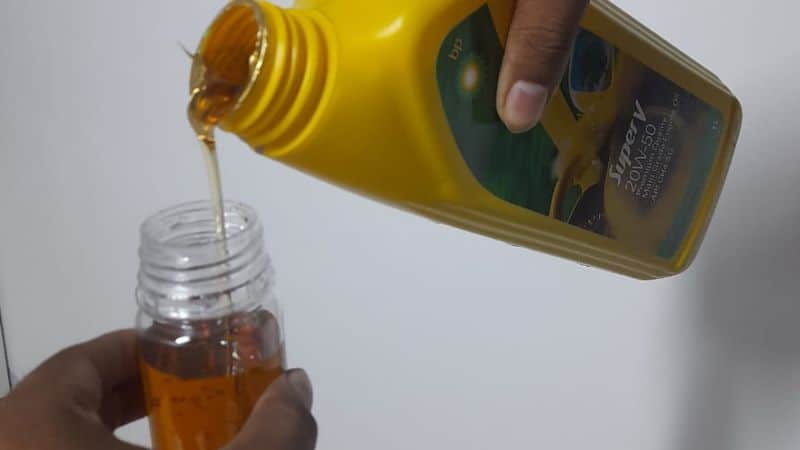ACEA, or the European Automobile Manufacturers Association, was founded in 1991. And ACEA’s founders are 15 major European car manufacturers. Also, ACEA is involved in many activities, and setting European oil standards is one of them. However, we know phosphorus and sulfur are vital additives in engine oils. ACEA sets strict recommendations on how much sulfur and phosphorus you must use on engine oil.
Motor oils containing low phosphorus and sulfur are known as low-SAPS or common ash oils. These oils belong to category C in ACEA’s oil classification, and “c” indicates catalyst compatibility. Based on the SAPS content amount, C-grade oils can be low-SAPS and mid-SAPS, and C2 is a mid-SAPS oil. Let’s know what oil ACEA C2 is in detail and more.

What Is Oil ACEA C2?
Accordingly, in 2004, ACEA C2 was first introduced in the ACEA oil sequence. And the ACEA 2021 update made several changes to the ACEA C2 requirements. ACEA C2 oil means European Automobile Manufacturers Association mid-SAPS oil. This oil is the top-tier mid (sulfated ash, phosphorus, and sulfur) SAPS lubricant.
They are suitable for use in high-performance gasoline and light-duty diesel engines. It’s because they use advanced after-treatment systems like three-way catalysts (TWC) and diesel particulate filters (DPFs). Generally, ACEA C2 oils are made based on low HTHS SAE 0W30 and 5W30 API Group III base oils.
Oil ACEA C2 Viscosity:
C2 stable, stay-in-grade motor oil with mid-SAPS level is compatible with the after-treatment system. Passenger cars and light-duty gasoline and diesel engines are intended for use with extended oil drain intervals. Besides this, this is a low-viscosity engine oil, and its minimum HTHS viscosity is 2.9 mPa⋅s. This mid-SAPS oil has a sulfated ash content of less than 0.8%.
ACEA C2 Oil List:
ACEA C2 oil is stable, stay-grade oil for automobiles fitted with three-way catalysts and Diesel Particulate Filters. High-performance gasoline and light-duty diesel engines need less SAPS lubricant because of the elf exhaust treatment device. The ACEA C2 oil price is expensive, from $15 to $200.
The ACEA C2 oils are:
- CASTROL Edge 5w30 Motor Oil
- FUCHS TITAN GT1 FLEX 23 SAE 5w30 Motor Oil
- TEXACO Havoline 5w30 Engine Oil
- PEMCO iDRIVE 300 Engine Oil 5W30
- REVLINE Ultra Force, C2/C3 Engine Oil 5W30
- Valvoline SynPower, ENV C1/C2 Engine Oil 5W30
- Synplus ACEA C2 0W30
- Shell Helix Ultra ECT C2/C3 0W30
- Motul 1L Synthetic Engine Oil 0W30
Check:
ExxonMobil Vs Chevron Vs Shell
Pennzoil Platinum vs. Castrol Edge

ACEA C2 Vs C3:
An ACEA C2 oil delivers better fuel economy than an ACEA C3 oil. However, because of lower film strength, ACEA C2 may not provide the same level of protection. ACEA C grade oils are not interchangeable with each other depending on the specific application.
C2 is a fuel-efficient version of C3 because of its slightly lower HTHS. But both fulfill the similar emission system abidance. Subsequently, this C2 suits TWC and DPF high-performance vehicles and petrol and diesel light van engines. The reason is that they need low-viscosity and low-friction oils. This oil also can increase TWC and DPF life and car fuel economy.
On the contrary, ACEA C3 is the same as C2 without HTHS>3.5 and fuel economy performance. Moreover, C3 oil’s minimum HTHS viscosity is 3.5mPa.s, and it can extend DPF and TWC life.
Plus, C3 oils contain a higher temperature viscosity rating than C2 oil. The C2 oil’s lower rating viscosity allows it to acquire a better economy by decreasing engine friction. C3 oil can’t do any harm if its viscosity rating is consistent, but C2 oil is also the best oil.
FAQ (Frequently Asked Questions):
Q. Can I use c2 instead of c3 oil?
No. You can’t use C2 oil instead of C3. It’s because C2 oil contains low viscosity, and its viscosity level is .2.9cP. In contrast, C3 has a minimum higher thickness, which is 3.5. Likewise, C3 oil provides better fuel economy performance than C2.
Q. What is the difference between C1, C2, and C3 oils?
Actually, based on the SAPS content amount, C-grade oil will be divided into two SAPS: low-SAPS and mid-SAPS. For example, C1 and C4 are low-SAPS oils, while C2, C3, C5, and C6 are mid-SAPS oils. Low-SAPS oil contains less ash than mid-SAPS oils. And C1 oils fulfill sensitive after-treatment device requirements.
C1 is a low-friction and low-viscosity oil with less than 0.5% sulfated ash content. Alternatively, C2 and C3 mid-SAPS oils sulfate ash content is less than 0.8%. Most importantly, You need to know that low-ash oils aren’t interchangeable. You should choose the appropriate product depending on your vehicle engine type.
Q. Can you mix C2 and C3 oil?
Yes. You can mix C2 and C3 oil. Since they contain the same content as they are both mid-SAPS oil. So you can mix them without any confusion. And it’s safe.
Final Word:
All internal combustion engines are not the same. Every vehicle manufacturer recommends using a specific oil formula that provides optimum lubrication and protection to the engine. That is precisely why European lubricant manufacturers must comply with the engine oil standards set by ACEA (European Automobile Manufacturers Association).
According to ACEA, C-grade oils are low-viscosity, stable, and low-friction oils. Oil ACEA C2 is one of the best oil grade specifications, providing low viscosity and friction. You can use this ACEA C2 oil in high-performance diesel and petrol engines with low-viscosity oil.
